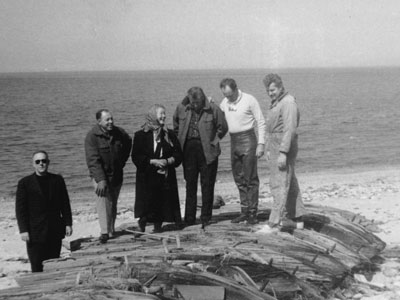What's In A Name?: Culloden Point

Culloden Point, at the east side of Fort Pond Bay in Montauk, is named for the H.M.S. Culloden, a British warship that ran aground there on a January day in 1781.
The ship, in its turn, had been named after the 1746 Battle of Culloden Moor, between the English and the Scots, which ended the Jacobite uprising.
In a fierce northeast storm accompanied by snow and gale-force winds, the Culloden, commanded by Capt. George Balfour, lost part of her rudder when she first scraped bottom, either at Gin Beach or Shagwong Reef. The captain managed to steer her into the calmer waters of Fort Pond Bay despite a hole in her side, but there the warship went aground again.
Water seeped in through the hole, filling the holds. Over the next several weeks crew members labored to save the vessel's supplies, cannon, and stores. Much was transferred to other ships; some was thrown overboard.
Then, lest the ship find its way into colonist hands, the crew burned it to the water line.
What was left, however, was largely preserved over the years by salt water and sediment. Some of the objects have been looted, others preserved - a 6,328-pound cannon and other artifacts can be found in the East Hampton Town Marine Museum - and some remain below.
Storms occasionally toss up remnants of the Culloden and other wrecks. In the 1950s, unsuspecting Montauk beachgoers found and burned a 60-foot-long piece of timber that may very well have been from the Culloden. It must have made quite a campfire.
The underwater locale where the Culloden lies is now an official archeological site, listed on the State and Federal Registers of Historic Places. It is illegal to remove anything from such places.
Before the Culloden met her fate, the spit of land there had been known as Will's Point, possibly named after Will Indian, a herder mentioned in early East Hampton Town records. Fifty-eight years after the ship went aground, the Amistad, with her crew of Africans led by Cinque, anchored off the very same spot.
